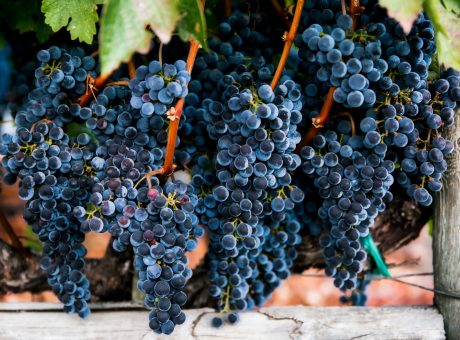Exploring Dessert Wines, Part 2
In Part 1 of this post, Sara shared a story about a customer who had sworn off dessert wines until she convinced her to try a few that she had never heard of before. Trying a few new dessert wines opened her customer up to a whole new, sweet world. The following are some of the lesser-known types of dessert wines that you may want to consider adding your tasting list before banishing dessert wines from your all-tim favorites list.
Madeira
Madeira wines are named after an island off the coast of Portugal where they’re made. They age very well, similar to port and are best when aged more than 50 years. Madeira is another fortified wine that produces a very distinct taste, resembling hazelnut and floral tones.
Noble Rot
Noble Rot or Botrytis is another method of sweet wine making where the grapes have actually been affected by rot. As weird as it sounds, these wines can be fantastic, luscious, sweet and full of fruit. The rot shrivels the thin-skinned grapes and produces some of the world’s sweetest and long-lived wines. They have a honey-tinged, aromatic flavor, and as it ages, turns from a pale yellow to a dark gold hue with extremely concentrated flavors.
Famous examples that you may have heard of are Sauternes from Bordeaux, Quarts de Chaume from the Loire, Hungarian Tokaji Aszu, as well as the rare and expensive wines of Germany and Austria called, Beerenauslese (BA) and Trockenneerenauslese (TBA). In the new world, you’ll find slightly less expensive, but still very good quality wines such as Semillon or Riesling from Australia or California, Montbazillac from South Western France, and Coteaux du Layon from the Loire Valley in France. Try some of these with a light refreshing lemon cheesecake or fresh fruit with zabaglione.
Eiswein
Eiswein, also known as Ice Wine, is made from frozen grapes, frozen either by natural freezing on the vine or by artificial methods. Eiswein grapes taste similar to grapes affected by Noble Rot. Freezing concentrates the flavors of the grapes and produces luscious, fruit forward, aromatic wines that go very well with delicate desserts such as sponge cake or a light ice cream. Artificial freezing, compared to the natural method, does affect the quality of the wine, but the process allows makers to sell them at a more affordable price. Usually found in smaller bottles, Eiswein has a syrup-like consistency. Try it with a dish of vanilla bean ice cream or a freshly made dish of peach ice cream. Wonderful!
Moscato
Moscato is also a great dessert wine. It’s sweet, but light, unlike the varieties above which tend to be concentrated and heavy. This particular dessert wine is a great addition to a summer barbecue with a fruit salad; sometimes I’ll soak some fruit in it – delicious! It’s also great with other light desserts like meringue puffs or angel food cake with strawberries. Try a light dessert with Middle Sister Sweet & Sassy Moscato, you won’t be disappointed!
Vin Doux Naturel
Vin Doux Naturel (VDN) is another sweet wine category. The sweetness is achieved by stopping the fermentation before all the sugars have been converted to alcohol. White VDN wines are most often made from Muscat grapes. They have floral scent with flavors of peach, apricot, honey and other island fruits. Try a Muscat VDN with a fruit tart. It’s especially tasty with an apple tartatan.
There are also red VDN wines, which are usually made from Grenache. Two of the most well known reds are Banyuls and Maury. They are very sweet, with rich, heady aromas and flavors of soft, marinating red fruits. They are wonderful with chocolate or coffee and cappuccino flavored desserts.
Be adventurous! Try a number of dessert wines until you find your favorite. And then you’ll be hooked! If you’re too full for a “real” dessert, try a small taste of dessert wine. It makes a delicious ending to a great meal.
– Sara Lehman





Exploring Dessert Wines, Part 1 | Wine Sisterhood
[…] Part 2 of this post, we’ll explore more of the lesser-known dessert wines any why you may want to add them to your […]
13 . Feb . 2013